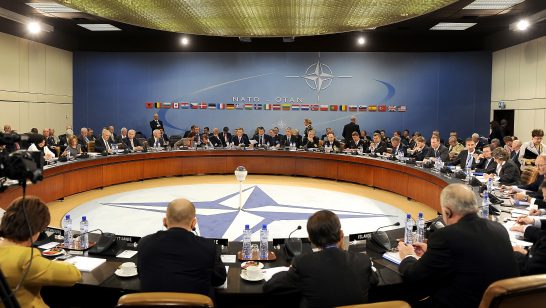The ELN welcomes the statement by NATO Deputy Spokesperson Carmen Romero on the recent ELN report Preparing for the Worst. It is a stated aim of the ELN to encourage debate and engagement on pressing security challenges in the Euro-Atlantic area and we are pleased that NATO has chosen to engage with our work.
The official NATO response states that the ELN paper puts the respective NATO and Russian exercises on par with one another.
This is not the case.
Whilst we compared the characteristics of the exercises and their respective purposes we did not at any point equate either the exercises or the wider political rationale for them on each side. In fact, on page 4 of our policy brief, we state the following with regard to the Russian exercises:
‘Such Russian exercises are meant to send a number of signals to NATO, its partners and other countries in the neighbourhood. Firstly, nuclear-related and large-scale conventional exercises have served to amplify Russia’s deterrence message to the West regarding the ‘sanctity’ of Russian territory, now including – according to Moscow – Crimea. Secondly, some exercises may be intended to signal that Russia has the means and the willingness to employ its forces for military coercion scenarios against a specific member or partner of NATO, as well as other countries in its ‘near abroad’.
We would invite observers to contrast this with what we say, on the same page of the paper, with regard to the increase in NATO exercises, namely:
‘the increase is mostly related to NATO’s efforts to adapt to the new security environment in the East and re-assure those allies situated closest to Russia.’
Nothing in the official NATO response contradicts any of the following facts in our paper:
- Each side is clearly training with the other side’s capabilities and most likely war plans in mind. Whilst spokespeople may maintain that these operations are targeted against only hypothetical opponents, the nature and scale of the operations indicate otherwise.
- The focus of the exercises is on what each side sees as its most exposed areas, with NATO concentrating on the Baltic States and Poland whilst Russia is focusing primarily on the Arctic and High North, Kaliningrad, occupied Crimea, and its border areas with NATO members Estonia and Latvia.
- Attempts to monitor the exercises have resulted in some close military encounters between the NATO and Russian militaries. For example, Russian Su-30 and Su-24 bombers approached close to NATO warships exercising in the Black Sea in March 2015. Also, a number of NATO interceptions of Russian aircraft and ships moving between the Kaliningrad exclave and mainland Russia have been a consequence of ongoing Russian exercises.
We continue to believe the overall dynamic is one of concern, and that more leadership attention and focus needs to be placed on managing it effectively.


